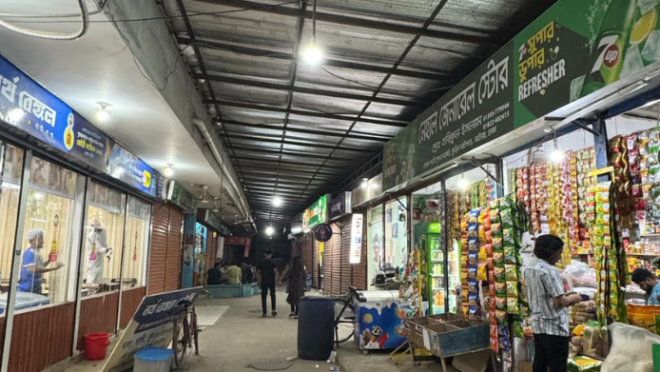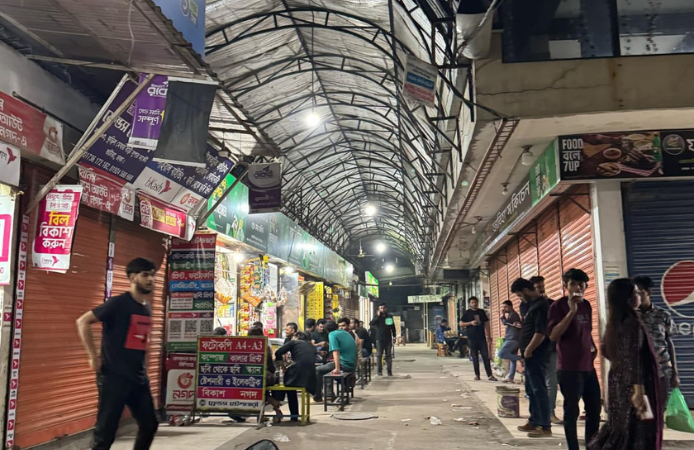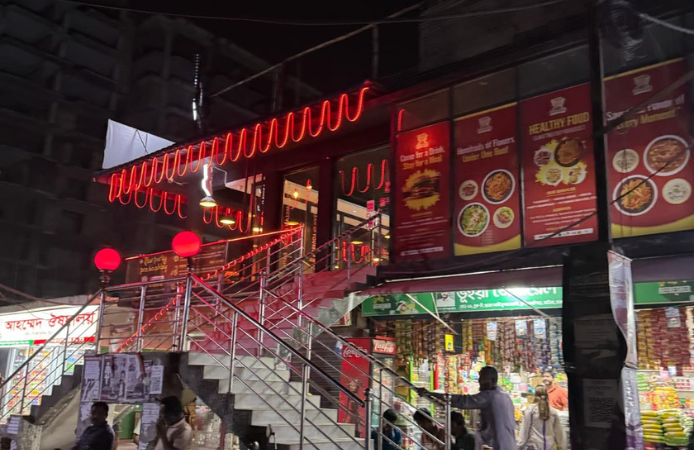Ghatpar: What makes it the place to be for students of NSU and IUB?
Ghatpar: What makes it the place to be for students of NSU and IUB?

When I first came to North South University, I was pretty impressed with what was going on. A great campus, decent clubs, and overall, nice places to hang out. But there was a big caveat to it all: the monopolised canteen. Overpriced, undersized and minimally flavoured food was not going to do it for me. So, I started looking for alternatives and then I was introduced to the mythical place of ‘Ghatpar.’ But what was Ghatpar? What happened to it? And more importantly, is there a Ghat there?
The people’s place
Located on the outskirts of Bashundhara Residential Area, surpassing Kuril, Ghatpar was connected to Bashundhara Residential Area by a pocket gate. In Ghatpar, you could find numerous restaurants, tea stalls and food vendors, all selling cheap, affordable and, most importantly, delicious food to students of NSU and IUB.

Even Bashundhara residents around Ghatpar used to go there for food and groceries. It was an ecosystem based on people’s friendliness and offered a retreat to frustrated students, who went there to socialise and chill out.
Unfortunately, I didn’t see this version of Ghatpar when I was admitted to North South University. What I saw was a concrete wall where the entrance once used to be and everyone around campus reminiscing about the good old days of Ghatpar.
Die Ghatpar mauer
I asked my seniors about what happened to Ghatpar. Why was it walled off? Well, apparently the story goes that after Covid hit, the stores in Ghatpar took a massive hit, and the whole place struggled economically.
Soon after that, security concerns and financial reasons forced the Bashundhara Residential Area committee to put up a wall between them and Ghatpar, sealing the area for good. This was not taken kindly by the students that called Ghatpar their go-to spot.
Ever since the wall was put up in April 2023, the businesses inside Ghatpar would begin to die out. And a big fire in May would be the final nail in the coffin.
The closure of Ghatpar forced NSU and IUB students to find alternative places to hang out and eat. Rajbari Food Court and Apollo Gate Food Court would be the two places most similar to what Ghatpar was, but the students never grew accustomed to them. For them, Ghatpar was the place they felt the most at peace.
It was a place closer to their campuses and to their hearts. It was a place where they spent countless hours of their student lives, and to see it all go down in flames, all in about a few weeks, was too much. Everywhere else, be it their own campuses, cafeterias or other places inside or outside Bashundhara, it would never come close to what Ghatpar was. It was a bleak time, but all would change in about a year.
The Revolution and the resurrection
One of the most unexpected yet welcomed changes after the July Revolution was the reopening of Ghatpar. The wall separating Ghatpar from its students was broken down during the revolts, and no one tried to reinstate it. As the students returned to their campuses around the end of August, they were greeted with the skeletal remains of Ghatpar and the promise of new shops opening soon.

Fast forward to today’s time, Ghatpar is beaming with business once again. The streets, broken down and dirty, couldn’t stop the influx of students who were delighted to be reunited with their beloved Ghatpar.
Shops and tea stalls were reopening. New and old vendors started their businesses, and before you knew it, Ghatpar was back to its glory days. Today as I enter Ghatpar from NSU, I am greeted by vendors and shopkeepers that I have made an emotional bond with.
The energy, the vibe of Ghatpar, is something you must see for yourself. The place where people go to forget about the chains of academics and just live, one smoke or puri at a time.


